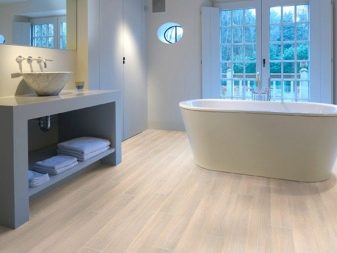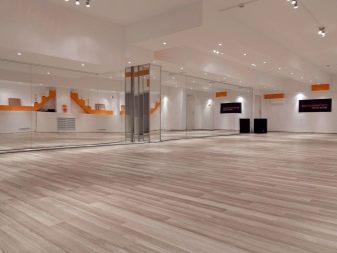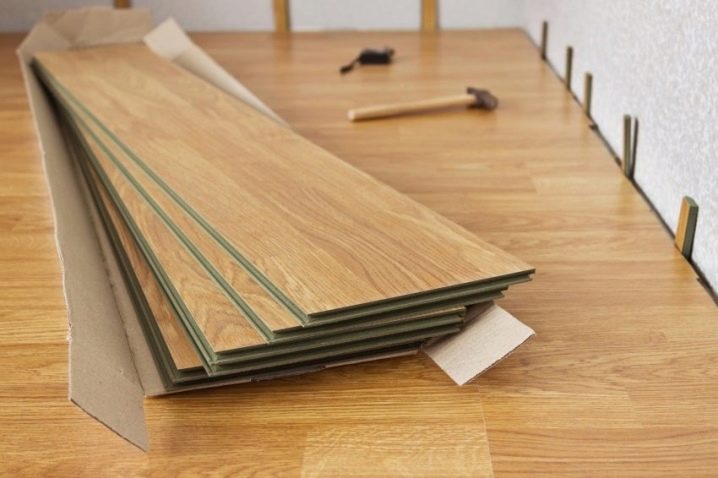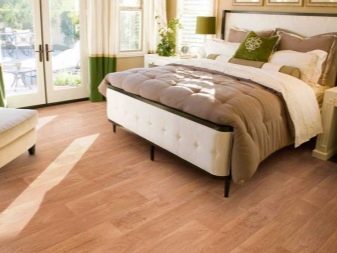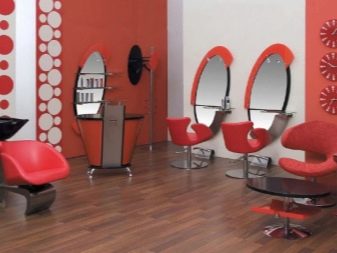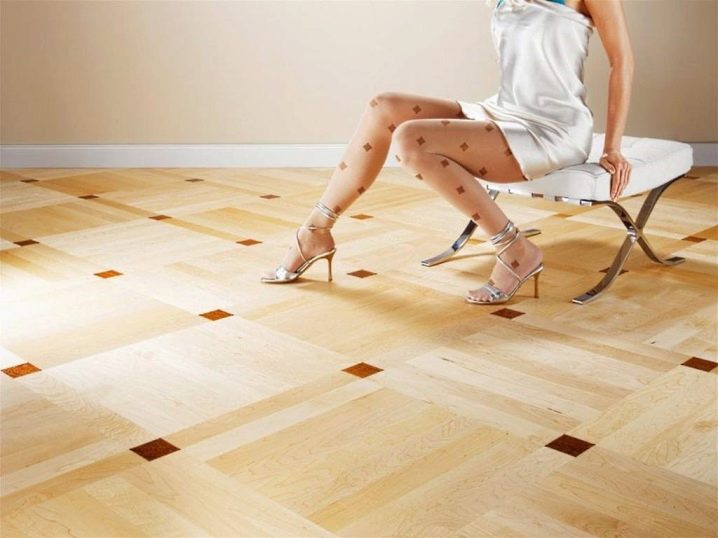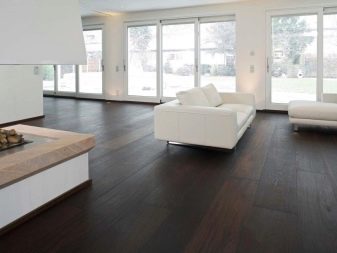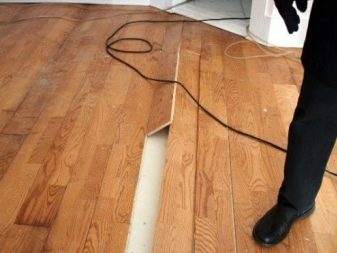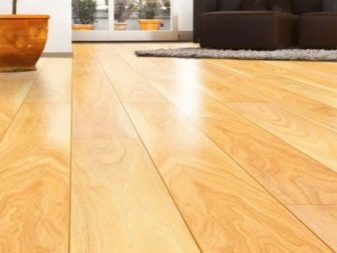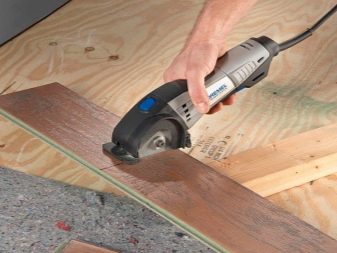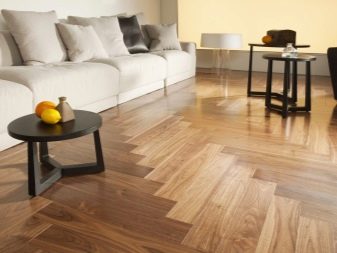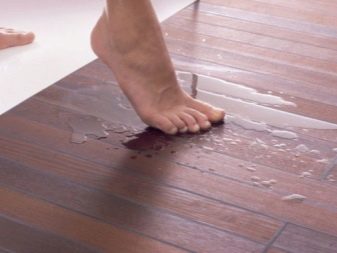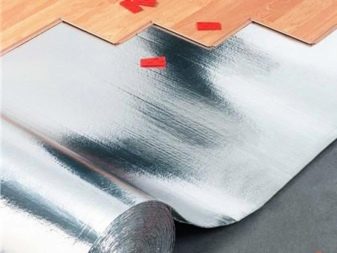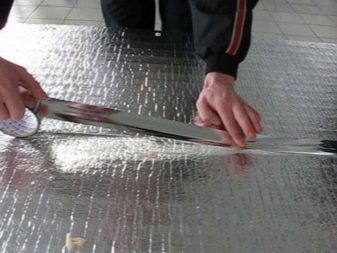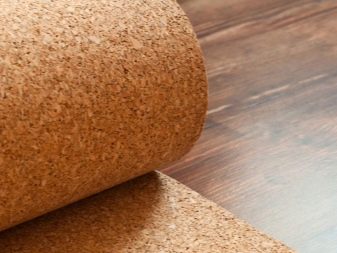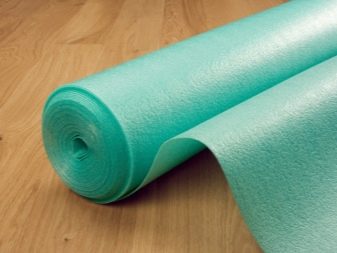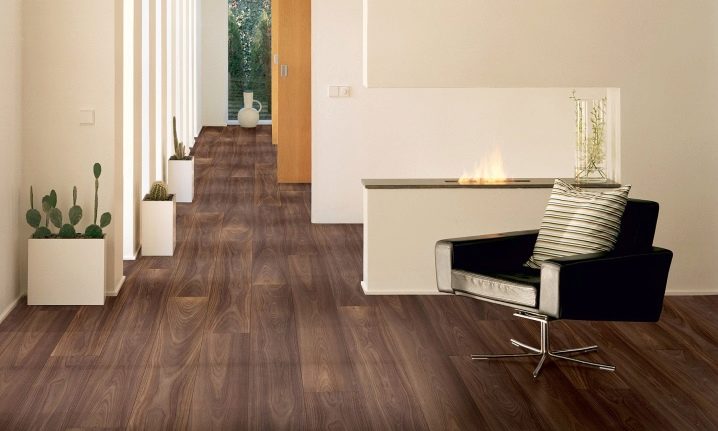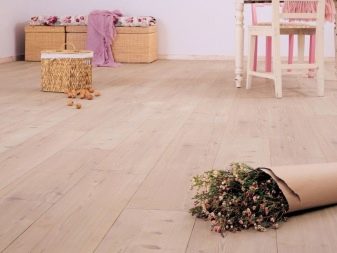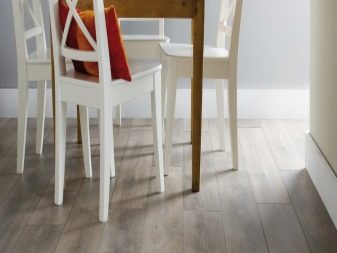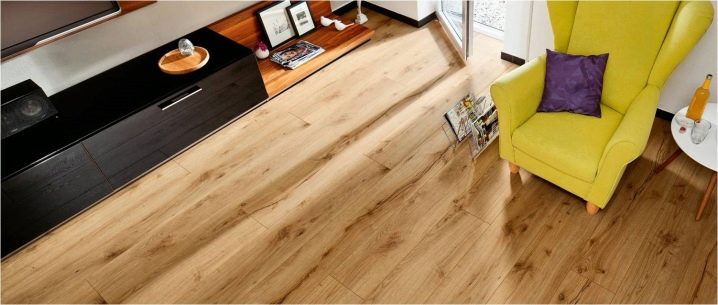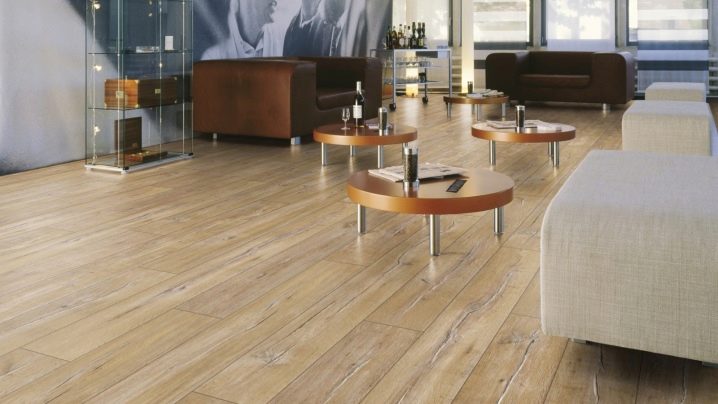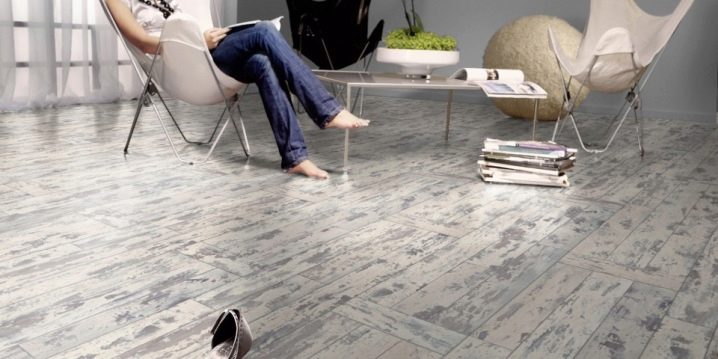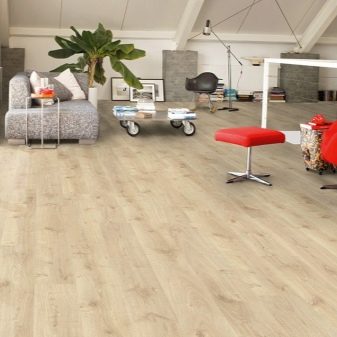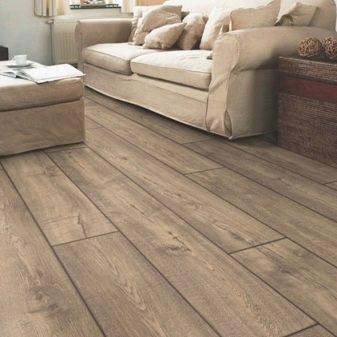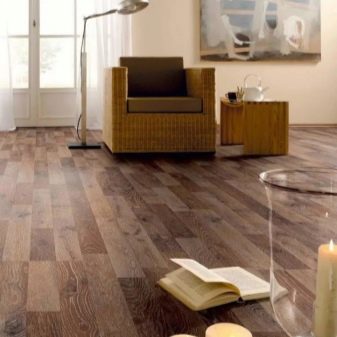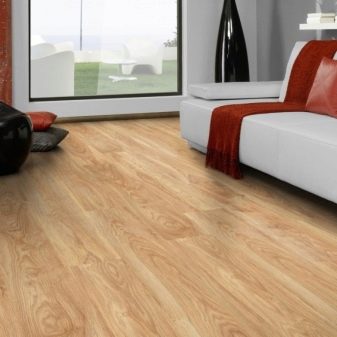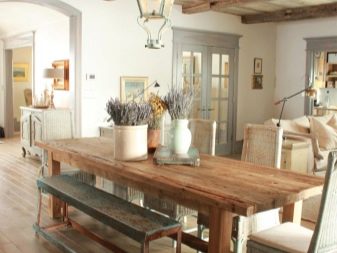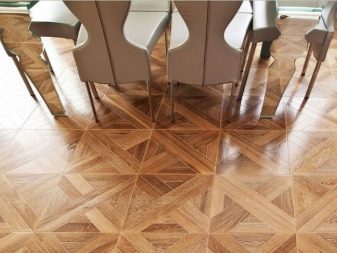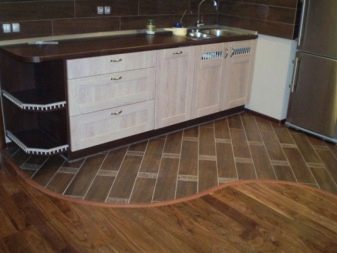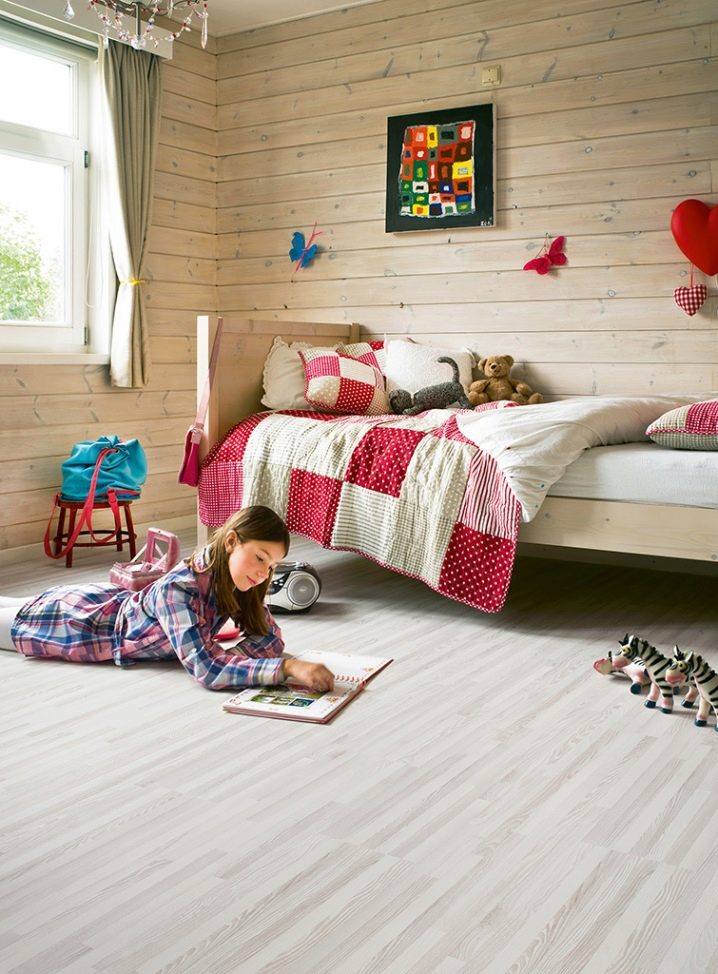What should be the thickness of the laminate?
The choice of laminate should be approached carefully, taking into account the technical features of the material, impregnation, types of locks, as well as the size of the product. The thickness of the laminate is directly related to its quality and durability. With proper selection and professional installation, the coating can serve at least 20 years.
Special features
The main qualities of the laminate - moisture resistance and anti-static, resistance to fading and deformation, ease of installation, a wide range of textures and designs are determined, first of all, by the thickness of this material and its substrate, as well as the structure of the material. The properties of modern laminate are such that it is universal, and therefore suitable for production premises, and for a private house, and for the apartment.
Structurally, the lamellae include 4 layers, each of which has its own structure:
- The layer below, giving the structure stability and protecting the next layer from moisture, gives the quality of the high density of the entire panel (the material is unrefined or resinous paper).
- Then follows a rigid base with a lock, made of dense fiberboard (HDF). The base determines the thickness of the panel.
- The penultimate is a decorative layer made of foil or special paper, where a pattern is applied under a tree, stone or other structure.
- The protective layer determines the service life of the laminate. Material - melamine or acrylic resin. This is actually the laminated layer, which determines the wear resistance, strength and other parameters of the product.
Kinds
Conventionally, there are 7 main classes of laminate:
- 21st, 22nd and 23rd grades - discontinued from production, however, they can still be found on sale, are used at home.
- For industrial premises, offices, apartments, high-grade fabrics are produced according to the criterion of durability - 31st (for areas with low load and service life of 3-5 years); 32nd (for use in homes and small offices.Maintains an average load and maintains good quality (up to 15 years); 33rd (for offices, housing, places with an average intensity of visits, with a lifetime of 15–20 years); 34th - used for shops, waiting rooms and other places with a high intensity of visits. The term of operation is up to 20 years.
It is important to remember that the load class is a relative parameter, since the quality is highly dependent on the technological aspects of production. Thus, the variants of production in Germany, according to the 32nd class, are not worse in their qualities than the Russian 33rd class.
Size specifications
Traditionally, the thickness of the laminate is in the range of 6-12 mm. As exceptions, there are variants of waterproof vinyl laminate, the thickness of which can be 4-5 mm. “Thick” models (more than 12 mm) are usually produced by Chinese manufacturers using their own technological developments.
Laminate class corresponds to its thickness:
- The 31st grade provides a thickness of 6-8 mm. Appointment - household options (bedrooms, nurseries, living rooms).
- 32nd grade - 7-10 mm. Produced mostly in the commercial version, but often for domestic use.
- 33rd class - exclusively commercial, has 9-12 mm thickness.Designed for premises of large areas with high dynamic loads.
- The 34th grade is 10-12.9 mm thick, the most durable commercial option, but not yet widespread. It is sold at high prices.
A Chinese manufacturer often sells on the Russian market special thickened models (13,14,15,16,17,18 mm) with the highest possible quality characteristics and long service lives. For home use, the most common option is to cover 31-32 classes with a recommended thickness of not more than 8-9 mm. Nevertheless, they do not withstand prolonged loading of massive objects.
It is important to take into account that the weak link of the thin laminate is fragile locking devices, which, with an intense local load, often become unusable. Therefore, for apartment or office conditions in which it is planned to place massive furniture, the best option is to cover 33 classes with a thickness of 9 mm. In these cases, the installation must be done at the same time with the substrate, which improves the characteristics of the web.
For commercial and office premises, the best options are 33-34 class with a thickness of 10, 11.12 mm.At high cost, they are more durable, this is the main difference in comparison with cheaper options.
What does it affect?
The thickness of the laminate directly affects such indicators as:
- Resistance to constant loads of both static and dynamic nature.
- Strength parameters.
- Insulation performance.
Taking into account the thickness of the laminated fabric is also necessary when choosing products for large areas, when the criterion of the stability of the coating increases in value. Therefore, the use of thickened panels in these cases would be appropriate. In addition, thick panels usually do not have significant deviations in size, which contributes to their easy and quick installation.
Thus, the parameter of the thickness of the canvas affects its strength, stability and a number of other indicators, which also include noise insulation and thermal conductivity.
What should be the standard?
The overall parameters of the panel are three parameters on which its entire assembly cycle depends.
The length of the panel does not have a stable standard size. The length of the web usually varies between 1260 and 1380 mm. In practice, this size can reach up to 18,450 mm.It is difficult to work with such boards, because they often cannot be laid flat (professional skills are required).
Difficulties when laying elongated panels:
- The floor surface must be particularly flat, otherwise the correct installation of the slats is not guaranteed.
- It is inconvenient to install long panels in small areas, which can lead to defects in work.
- In the process of laying the elongated panels there is a need for frequent trimming, which often adversely affects the quality of installation.
The standard width of the bar provides the following options:
- from 90 to 160 mm. This panel "under the floor". For example, laminate "under the oak."
- from 185 to 195 mm. The most popular product - the usual laminate board.
- up to 330 mm - wide version. For example, "under the ceramic tile."
- up to 400 mm - wide panels, “under the artistic parquet”.
The most common panels with a width of 185-200 mm, they have an average price, practical, versatile and easy to install. Sheets of considerable size are used to cover large areas. Small apartment is more convenient to lay out small boards.
How to choose?
Since the choice of the optimal thickness of the board depends on various parameters and conditions, in the selection process it is necessary to pay attention to its durability and ease of installation.According to generally accepted criteria in practice, laminate plates with a thickness of 12 mm are considered thick, with dimensions of 6-7 mm - thin. The most popular slat thickness is 8 mm.
With a high purchasing power of the consumer, it is more profitable to acquire a waterproof coating of the 33rd class with an operational period of up to 25-30 years. In order to save money, you should not mount material of the 31st class in areas with an intensive visiting regime (kitchens, corridors). A canvas of the 32nd class, 7-8 mm thick, may be a suitable choice for an apartment.
You should not strive for maximum material thickness (cost), since thicker material may not be suitable, for example, for warm floors. Therefore, a competent choice should occur taking into account the specifics of the conditions and requirements at the place of its installation.
Among the obvious criteria for the choice of laminate should be borne in mind:
- degree of load (the weight of the furniture);
- thickness and quality of preparation of the "black floor".
For a water-heated floor, professionals recommend choosing the thickness of the board - from 8 to 10 mm, which passes the heated air well.
The use of self-leveling floor is practically the only option for obtaining high quality andthe durability of the surface of the laminate in the following cases:
- When the thickness of the applied layers is from 2 to 20 mm.
- When it is necessary to comply with high precision casting height (up to 1 mm).
In the next video we offer to familiarize with the main important points when choosing a laminate.
Which substrate is best?
The substrate (lining) under the laminate is made of various materials (cork, foamed polyethylene or polystyrene foam film) and is different in thickness. The optimal size is a thickness of 2-3 mm. On the one hand, this size does not allow the material to spring back, which increases its resource; on the other hand, it provides decent sound and heat insulation, allowing at the same time smoothing out minor roughness of the subfloor.
One of the best substrates is foil-coated, including the polymer on which the foil is applied. This design feature allows you to achieve excellent thermal insulation and sound insulation qualities due to the effect of light reflection. At the same time, there is no need to use an additional vapor barrier layer. The disadvantage is the high cost.
The cork substrate (pressed crumb) is widely used.This eco-friendly option, which has excellent sound insulation and heat insulation capacity, resists mold and is antifungal. The use of a cork substrate requires a smooth and even base. However, a 3-4 mm thick cork sags under massive objects, and therefore it is better to use this option in small rooms. High and the cost of this material.
The substrate on the basis of polyethylene has the following advantages: it is resistant to various environments, impacts, easy and convenient to install, has excellent resistance to moisture, its low cost. However, under the influence of ultraviolet radiation, after a time, this substrate is destroyed, and the coating itself sags.
Manufacturers
Among the variety of companies offering laminate flooring today, German, Swedish, Belgian and other European manufacturers are especially popular.
Pergo (Sweden)
Advantages:
- Rich design solutions.
- High level of durability.
- Perfect PerfectFold ™ 3.0 locking device.
- Ease of care.
- Environmental friendliness.
- Warranty - 25 years.
Disadvantages:
- High price level.
- The prevalence of fakes.
Berry Alloc (Belgium-Norway)
Produced by high technology HPL (high pressure laminate).
Main advantages:
- Variety of designs.
- One of the best parameters of wear resistance.
- Reliable lock.
- Safety and easy operation. Laminated parquet has the highest performance criteria for fire safety, anti-static, anti-slip.
Disadvantages:
- High price.
- Frequent fakes.
Kaindl (Austria)
This popular brand is usually associated with high quality. Main advantages:
- One of the most dense products of the class of coatings.
- Rich design for different interiors.
- Reliable set of locking devices.
- Warranty - up to 30 years.
Disadvantages - the high cost of products.
Haro (Germany)
It produces laminated products of 31-33 grades, 7-10 mm in thickness, with the most accurate imitation of natural textures.
Main advantages:
- Variety of design solutions.
- The TRITTY Silent CT noise isolation system used makes Haro's parquet "quiet."
- Reliable lock systems.
- Uncomplicated care.
- Certificates availability:
Cons - the high cost of production and the lack of saturated colors.
Kronotex
The largest and most stable manufacturer of laminate coatings.This is one of the structural divisions of the famous Swedish corporation Krono.
Advantages:
- The variety of collections of laminate parquet 32-33 classes.
- Excellent performance.
- Secure click lock.
- The term of operation is from 18 to 30 years.
The disadvantage is high prices.
Hdm
Concern Holz Dammers Moers manufactures high-quality panels under the brand HDM.
Advantages:
- A varied selection of quality decors.
- Wear resistance of the protective layer.
- It is harmless to patients with allergies.
- Warranty - 25 years.
Disadvantages - high prices, small selection of designs.
Quick step
In the Nizhny Novgorod region there is a plant that produces coatings that are widely demanded by Russian consumers. Advantages:
- Variety of decors.
- Does not electrify and does not fade.
- The reliability of the locking systems that allow you to mount a strong closing panels.
- There are special collections for wet rooms Impressive.
- Warranty - 25 years.
Disadvantages:
- Low quality of the panels in comparison with the Belgian samples (weakness of the upper layer, violation of geometry, instability of painting on chamfers).
- Come across a marriage.
- Chemical odors.
Tarkett / Sinteros (Russia-Germany)
Advantages:
- The widest selection of designs with different textures.
- The effectiveness of locking systems (TC `Lock).
- Quality boards.
- Warranty - 15-25 years.
Disadvantages:
- High prices of popular series.
- The surface in some series slips.
- Sometimes there is a marriage in the panels.
Kronostar (Russia-Germany)
Enterprise in the Kostroma region.
Advantages:
- Extensive selection of design proposals with classic shades.
- Reliability locking systems Double Clic.
- Good specifications.
- Warranty - 15 years.
Disadvantages:
- Monotony of sizes in collections.
- Sometimes there is a marriage in the drawings and locking devices of the slats.
Egger
Fritz Egger GmbH & Co (Austria-Germany-Russia) sells 31-33 grade laminate coatings with the Egger brand.
Advantages:
- A rich selection of quality designs.
- Creative from Egger - watertight plate "under the wood."
- Lock systems are simple and reliable - UNI Fit and Just Clic.
- Installation and floor and wall.
- Warranty from 12 to 25 years.
Disadvantages:
- In the domestic series there are defective panels.
- Some releases have unreliable locks.
Successful examples and options
Flooring "under the wood" in the dining room.
Laminate flooring.
The harmonious combination of laminate with a kitchen interior.
Waterproof laminate flooring in the bathroom.
Environmentally friendly laminate for the nursery.


